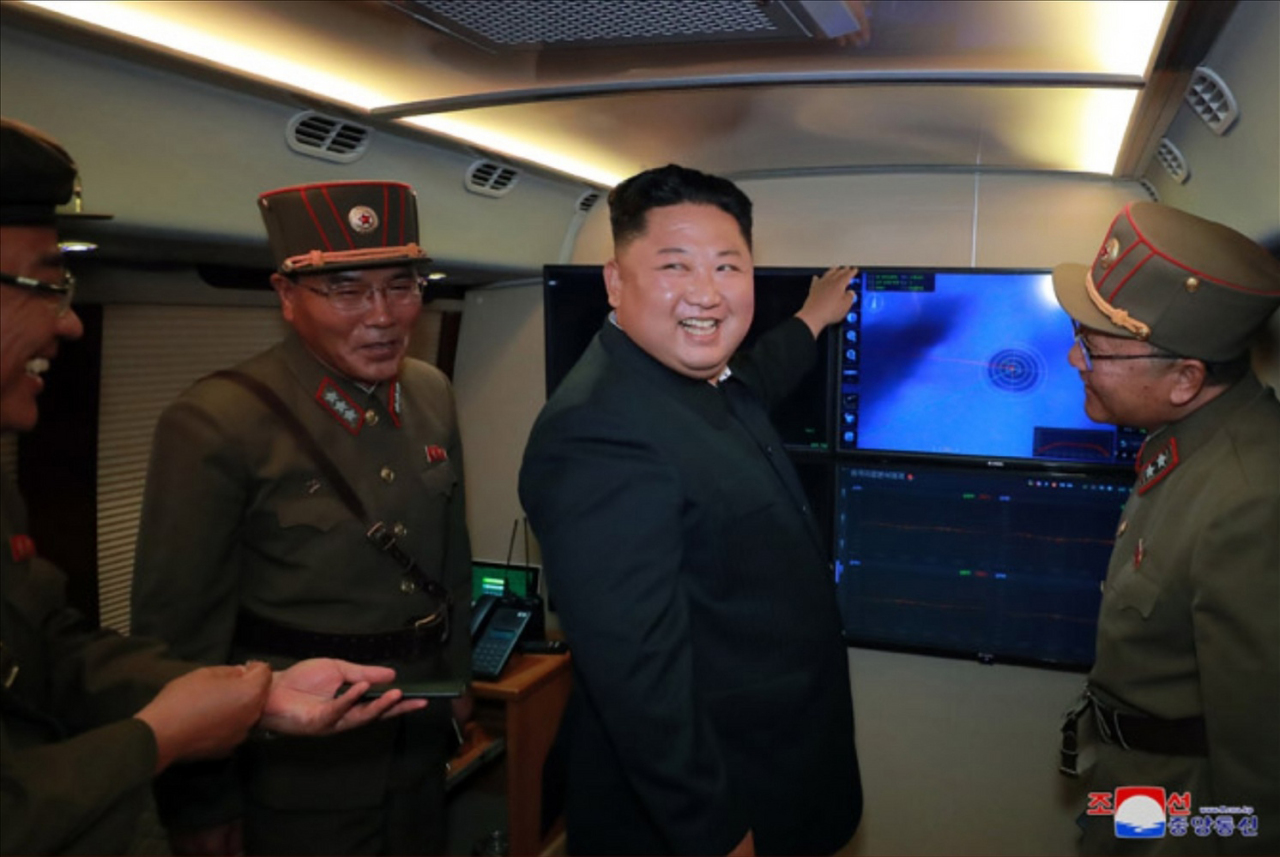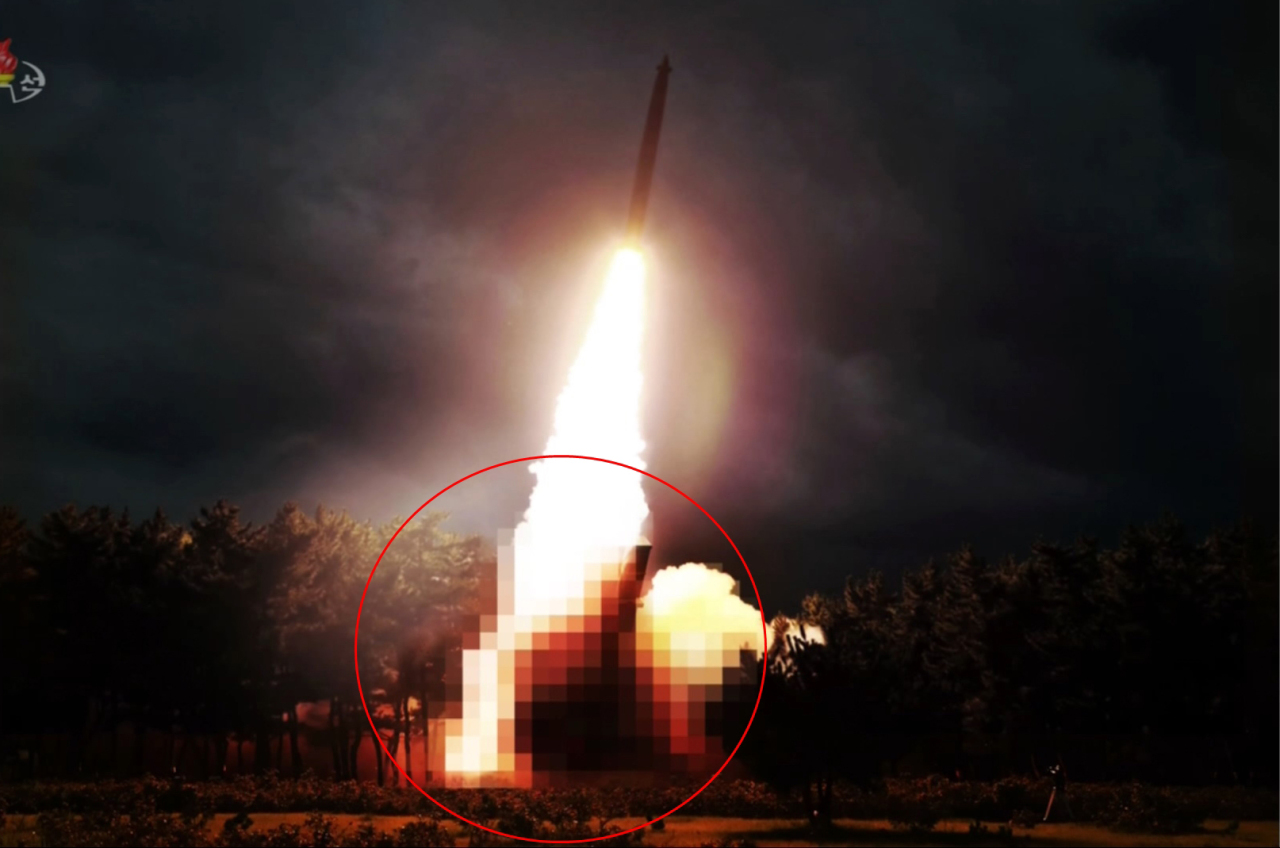[News Focus] NK missile launches aimed at domestic audience, testing intelligence capabilities of S. Korea, US: experts
North Korea says it cannot help but seek ‘new way’ if South Korea and US continue joint military exercises
By Jo He-rimPublished : Aug. 6, 2019 - 18:47
After firing two unidentified projectiles that Seoul believes to be short-range ballistic missiles early Tuesday, North Korea issued a statement strongly denouncing South Korea and the United States for their joint military exercise that kicked off the day before.
In a statement carried via its news outlets, North Korea’s Foreign Ministry spokesperson poured scorn on the joint military exercise and other military actions taken by the allies, warning such actions would inevitably drive the North to seek a “new way.”
“Whenever they open their mouths, the US and South Korea blabber that their joint military exercise is for ‘defense posture’ and ‘crucial factors’ for military readiness,” the statement read. “Then we (North Korea) also have to develop, test and prepare physical methods to protect our country. And the US and South Korea would have no words to justify (their actions).”
In a statement carried via its news outlets, North Korea’s Foreign Ministry spokesperson poured scorn on the joint military exercise and other military actions taken by the allies, warning such actions would inevitably drive the North to seek a “new way.”
“Whenever they open their mouths, the US and South Korea blabber that their joint military exercise is for ‘defense posture’ and ‘crucial factors’ for military readiness,” the statement read. “Then we (North Korea) also have to develop, test and prepare physical methods to protect our country. And the US and South Korea would have no words to justify (their actions).”

Earlier in the morning, the communist regime fired two of what appeared to be short-range ballistic missiles from the southwestern county of Kwail in South Hwanghae Province at 5:24 a.m. and 5:36 a.m., according to Seoul’s Joint Chiefs of Staff. Both flew around 450 kilometers across the peninsula before plunging into the East Sea.
The highest reached altitude was about 37 km, and the top speed was around Mach 6.9, according to the Joint Chiefs of Staff.
Seoul and Washington on Monday began the computer-simulated command post exercise to prepare for emergency situations and to verify Seoul’s capabilities for the envisioned retaking of wartime operation control of its troops from the United States military.
Pyongyang has long been critical of the joint exercises, labeling them rehearsals for invasion. Tuesday’s statement also said that South Korea and the United States are engaging in a “war of aggression” against the regime, reiterating that the military actions are deemed “provocative” to Pyongyang.
The statement said the joint exercise shows “flagrant disregard” and violates the joint statements and declarations issued between North Korean leader Kim Jong-un and US President Donald Trump as well as with South Korean President Moon Jae-in last year.
“Even after the NK-US Singapore summit, the United States and South Korea continued to exercise for war of aggression against us, hold joint Navy and air trainings, Dongmaeng 19-1 and Proliferation Security Initiative,” North Korea’s statement read.
“It also conducted simulation testing of intercepting our inter-continental ballistic missiles. (The United States) also did not hesitate to test-fire its ICBM ‘Minuteman-3’ and submarine-launched ballistic missile ‘Trident-2 D5.’”
In addition, Pyongyang pointed to the US defense university report that proposed sharing US nonstrategic nuclear capabilities with South Korea. It also criticized South Korea’s introduction of F-35A stealth fighters and the arrival of a US Navy nuclear submarine.
“If speaking on (the necessity of) dialogue, while sharpening a knife against us in the back, is what the United States and South Korea blabber as ‘creative solution’ and ‘imagination beyond common sense,’ we cannot but to seek the new way that we indicated before,” the statement read.

Following the missile launch, Cheong Wa Dae held an emergency ministerial-level meeting presided over by National Security Director Chung Eui-yong and Defense Minister Jeong Kyeong-doo.
“The related ministers view the situation is serious and agreed to keep a close watch over the situation and maintain vigilance and defense posture under close coordination between South Korea and the US,” Cheong Wa Dae spokeswoman Ko Min-jung said in a statement.
Regarding the continued missile launches by North Korea, experts say they may be aimed at controlling internal politics in addition to expressing dissatisfaction over the allies’ joint exercise.
“I believe the launches are to demonstrate the modernization of its weapons and, fundamentally, for internal governance,” said Kim Dong-yeob, a professor at Kyungnam University’s North Korean Studies School.
“It also appears that the North sought to test the detection and analysis capabilities of the intelligence assets of the South and the US.”
Moon Sung-mook, a senior researcher at the Korea Research Institute for National Strategy in Seoul, also said weapons development is one of the purposes for the launches.
“While expressing dissatisfactions with the US and South Korea, Kim is also seeking to test and advance the country’s new weapons, especially the short-range missiles,” said Moon, a former South Korean colonel who negotiated in working-level military talks in the past.
Pyongyang’s launches may also be aimed at negatively influencing the alliance betwen South Korea, Japan and the US, as the dispute between Seoul and Tokyo is escalating over trade curbs, Moon explained.
“North Korea also would want to break the ties among South Korea, the US and Japan. So I do believe that the recent missile launches and the joint air-patrol drill conducted by China and Russia are not irrelevant.”
Warplanes from Russia and China entered South Korea’s defense identification zone in the recent weeks, with one of the Russian military aircraft violating Korea’s airspace in mid-July.
Pyongyang may be seeking to gain leverage in denuclearization negotiations with Washington, not going further than launching short-range projectiles.
“By increasing tension on the Korean Peninsula with the missile launches, Pyongyang seeks to draw a stance from the US that will be more favorable for them,” Ko Myung-hyun, a researcher at the Asan Institute for Policy Studies, told The Korea Herald.
But the provocative actions do not cross the line that would trigger the US to fire back, Ko explained.
“Looking at North Korea’s previous military actions, it usually escalates the level of provocations each time. But this time, Pyongyang knows that leveling up the provocation would only provide the US with justifications for stronger actions against it. So it is seen firing more missiles, but not more powerful ones.”
By Jo He-rim (herim@heraldcorp.com)


















![[KH Explains] Hyundai's full hybrid edge to pay off amid slow transition to pure EVs](http://res.heraldm.com/phpwas/restmb_idxmake.php?idx=652&simg=/content/image/2024/04/18/20240418050645_0.jpg&u=20240418181020)

![[Today’s K-pop] Zico drops snippet of collaboration with Jennie](http://res.heraldm.com/phpwas/restmb_idxmake.php?idx=642&simg=/content/image/2024/04/18/20240418050702_0.jpg&u=)